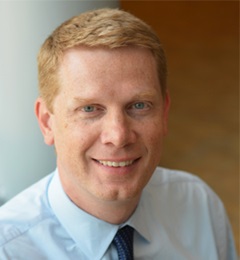
The summer of 2021 was the hottest in 126 years of records for the contiguous United States, according to a climate report released by NOAA in September. Temperatures across the nation were 2.6 degrees above average, slightly higher than the heat experienced during the Dust Bowl summer of 1936. U.S. cities often experienced temperatures that exceeded those of the surrounding areas. Researchers have identified areas of concentrated heat within cities called heat islands, which are typically landlocked areas laden with concrete and containing little to no grass, trees or bushes.
People living and working in these environments can experience hotter days, less nighttime cooling, and higher air pollution than surrounding areas. The Environmental Protection Agency has shown that these conditions can contribute to heat-related deaths and illnesses such as stroke, respiratory difficulty, cramps, and exhaustion. Without adaptive measures, health threats in these communities will increase as the planet warms, raising serious concerns about the safety and well being of people living in urban environments.
A recent article published in Nature Communications found that people of color are more likely to reside in surface urban heat islands than non-Hispanic whites in all but 6 of the 175 largest urbanized areas in the contiguous United States. The disproportionate distribution of people of color in high-risk areas has been attributed to historical practices of real estate, urban development, and planning policies that promoted spatial and racial segregation in U.S. cities. Although everyone will be affected by climate change, these factors indicate that people of color are facing more significant urban heat island-associated health risks as the planet grows increasingly warmer.
Heat islands, flood risks, crop failure, and wildfire worldwide will also disproportionately affect people of color and those living below the poverty line. These communities are often most aware of the impacts of climate change but least equipped to address them. Engaging affected communities with educational information, mitigation plans, and adaptive technologies can increase understanding of the problem and help advance solutions. Scientists and engineers can play a role in promoting equity and justice while disseminating climate solutions to disadvantaged communities.
Sigma Xi has launched an initiative to help scientists and engineers develop communication projects that will educate and prepare at-risk communities to mitigate the causes of climate change and adapt to climate threats. #SciCommMake is a collaboration between Sigma Xi and Science Talk that brings together interdisciplinary teams of scientists, artists, and science communicators. The teams compete for funding to create innovative artwork, social media campaigns, publications, and films that effectively and broadly communicate scientific information to the public.
The third cohort in this series will be convened during the Sigma Xi Annual Meeting and Student Research Conference to participate in a virtual matchmaking session to identify partners and develop a project concept that addresses the needs of vulnerable communities. Teams will be formed based on participants' ranked choices and complementary expertise. Matched teams will meet with coaches for feedback and pitch their ideas to a panel of judges. Winning teams will receive funding to complete their projects.
I look forward to sharing these projects with you in the coming months. For more information about #SciCommMake or to volunteer your support for this program, please email executiveoffice@sigmaxi.org.
Sincerely,

Jamie L. Vernon
Sigma Xi Executive Director and CEO
Related links: